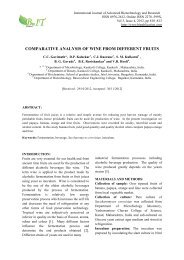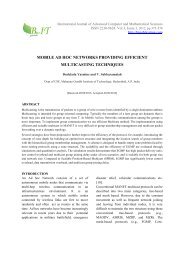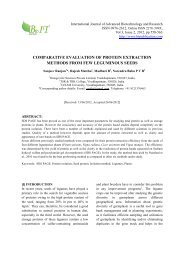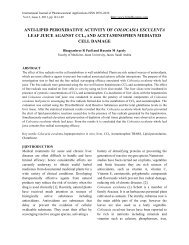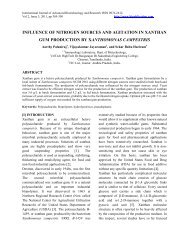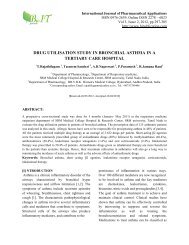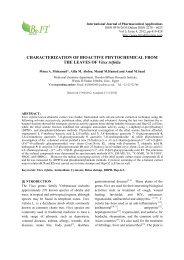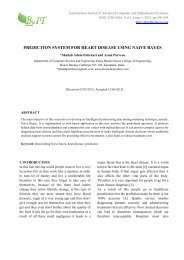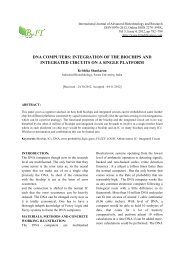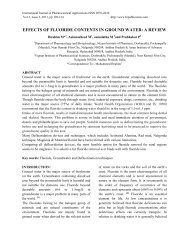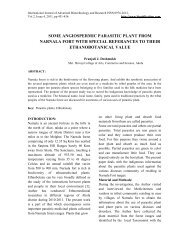COMPARATIVE STUDY OF PRODUCTION OF WINE FROM MILK ...
COMPARATIVE STUDY OF PRODUCTION OF WINE FROM MILK ...
COMPARATIVE STUDY OF PRODUCTION OF WINE FROM MILK ...
Create successful ePaper yourself
Turn your PDF publications into a flip-book with our unique Google optimized e-Paper software.
<strong>COMPARATIVE</strong> <strong>STUDY</strong> <strong>OF</strong> <strong>PRODUCTION</strong> <strong>OF</strong> <strong>WINE</strong> <strong>FROM</strong> <strong>MILK</strong> AND WATER <strong>OF</strong> Cocos nucifera L.with the help of Refractometer desired Brixpercent was confirmed.2.2.2 Inoculum preparation-Inoculumpreparation was done by activating Yeast.The hot water having temperature 40 0 c was takenin conical flask. Approximately some coconutwater was added. Then 0.5gm of Wine Yeastwas added to above solution. Mixture wasallowed to react for 20 min. Then this mixturewas used as inoculum. Now, milk was inoculatedwith activated yeast inoculum.2.2.3. Fermentation- Fermentation was done intwo phases: a) Aerobic fermentation in which wehad first kept media for primary fermentationwhich is essential for initial growth of yeast cells.Total period required for primary fermentationwas of 5 days. Temperature was kept at about 19-22 0 c. b) Anaerobic fermentation in which we hadperformed anaerobic fermentation creatinganaerobic condition by fixing air tight lid tocontainer. Here also temperature was maintainedat about 19-22 0 c. This process was carried out tillthe BRIX becomes 0.2.3 Analytical testing:As the process of racking was completed, varioustesting were carried out to determine quality ofwine. Those tests are as following:1. Alcohol determination.2. Titrable Acidity (T.A)-The acids present in wine are tartaric acid, malic,succinic, acetic acid. So the titrable acidity wascalculated by using following formula-3. Volatile acidity:4. Sulphur Dioxide:a. free so 2 by idometry method done usingfollowing formula:Free SO 2 in ppm = ml of I 2 * normality of I 2 *32*1000/ wine sample.b. Total SO 2 by idometry method:Total SO 2 in ppm = ml of I 2 * normality of I 2 *32*1000/ wine sample.5. Stability tests like Heat Stability and Coldstability Test were analyzed.6. Methanol Presence Test-This test providesthe information about presence of methanol inwine. It is also helpful to know that methanol isin moderate or high quantity. These tests weredone using a. Litmus Paper Method. and b.Potassium-di-chromate Method.2.4. Flavoring: After completion of analyticaltesting we had decided to add flavors to the wine.The Flavoring agent’s like Lemon (To obtainlemon flavor), Vanilla (To obtain Vanilla flavor)and Lemon Grass were added.2.5 Aging- Along with addition of flavors, agingwas carried out by adding ‘Oak chips’ to eachcontainer of flavored wine. Aging was done forabout 1 month.III. Result and Discussion:a) For Coconut water wine:Observations and results for analyticaldetermination of Coconut wine as listed in table1.Also the physical tests and methanol tests wereperformed which were important regardingquality of wine. The results of these tests arelisted in table 2Vishu J. Gaikwad, et al. 277



